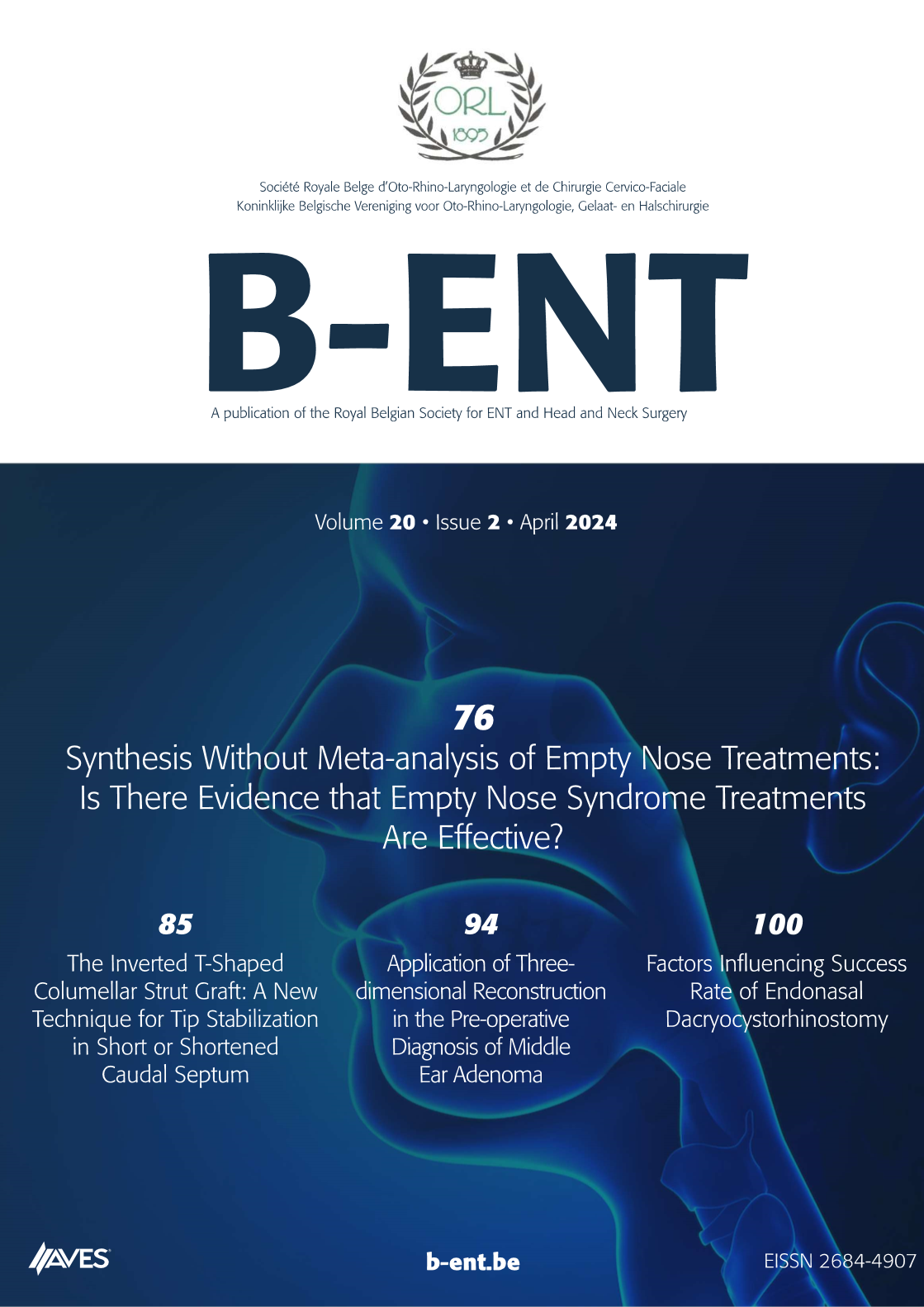Factors influencing tumour relapse after total laryngectomy. Objectives: To determine the prognostic factors predictive of tumour recurrence after surgical treatment for laryngeal carcinoma with total laryngectomy.
Study Design/Methods: Retrospective review of 308 patients with laryngeal carcinoma who underwent total laryngectomy in the ENT Department of AHEPA University Hospital between 01/01/1992 and 31/12/1999. In 238 patients, total laryngectomy was performed as primary treatment of laryngeal carcinoma, and in 70 others as treatment of tumour recurrence following radiotherapy or partial surgery. Follow-up was standardized, following a strict protocol, the mean follow-up time was 68 months.
Results: During post-operative follow-up, recurrences were observed in 96 of 308 patients (31%). The relapse rates were 27% (65 of 238) for patients treated with primary total laryngectomy, and 44% (31 of 70) for those treated for recurrence following previous treatment. The difference in relapse rates was statistically significant. In 39 of 238 (16%) cases treated with primary total laryngectomy cervical lymph node infiltration was present at diagnosis and radical or modified neck dissection was performed. The tumour recurrence rate in this group was 46% (18 of 39), while in metastatic nodefree patients the relapse rate was 24% (47 of 199) [p < 0.05]. Primary laryngectomy was effective in 82% of glottic, 70% of supraglottic, and only 59% of transglottic carcinoma. Concerning primary tumour extension at the time of surgery, total laryngectomy proved effective in 85% of T2 tumours, 81% of T3, and only 55% for T4. The higher recurrence rates for supraglottic and transglottic tumours seem related mainly to the higher rates of cervical lymph node metastasis at diagnosis. The majority of tumour recurrences were observed during the first two years of post-operative follow-up. Thus, 76% of the 308 patients remained disease-free after the first year of post-operative follow-up, 68% after the second year, and 67% after the fifth follow-up year. Of the 96 recurrences documented until now, 91 were loco-regional (19 at the tracheostomy), and only 5 involved distant metastases. Sixteen of the 308 patients (5%) subjected to total laryngectomy have since developed second primary neoplasms, most often involving the lungs (10 patients).
Conclusions: Prognostic factors for recurrence following total laryngectomy include: performance of total laryngectomy as salvage surgery, degree of tumour extension, infiltration of cervical lymph nodes at the time of initial diagnosis, poor initial tumour differentiation and trans-glottic/sub-glottic tumour localization.



.png)
